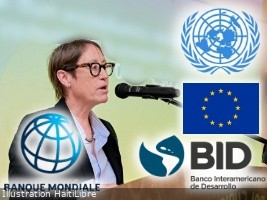The Haitian government, in partnership with key development organizations including the World Bank, the Inter-American Development Bank, the European Union, and the United Nations, has released an updated version of the Rapid Impact Assessment of the Crisis (RCIA) and its accompanying investment plan. This revision, necessitated by the evolving security landscape since the plan’s initial release in December 2024, aims to ensure the relevance and feasibility of Haiti’s recovery efforts. Originally valued at $1.6 billion, the updated plan now estimates a total funding requirement of $644 million for the period 2026–2027. However, with the national budget and existing donor commitments covering only about half of this amount, a critical funding gap of $364 million has emerged, threatening the implementation of priority recovery initiatives. This shortfall highlights the pressing need for enhanced donor coordination and innovative financing mechanisms to support Haiti’s transition to stability. Anne-Lucie Lefebvre, World Bank Country Manager for Haiti, emphasized the importance of aligning resources with critical priorities, stating that improved security conditions do not diminish the assessment’s relevance but rather reinforce its role in restoring basic services, infrastructure, and livelihoods in gang-liberated areas. The establishment of the Gang Suppression Force by the Security Council and the creation of the United Nations Support Office in Haiti are seen as pivotal steps toward restoring security and stability. Ariel Pino, Acting United Nations Resident Coordinator in Haiti, noted that these measures reflect a shared commitment to addressing Haiti’s multifaceted challenges. The RCIA and investment plan focus on the Port-au-Prince metropolitan region, prioritizing economic recovery, governance, infrastructure, social protection, and the rule of law. All proposed programs have been rigorously assessed for feasibility, considering physical access and operational capacity constraints. Additionally, the Crisis Recovery Framework (CRF) has been developed to streamline planning, coordination, and monitoring of recovery activities, ensuring transparent oversight of investments.
